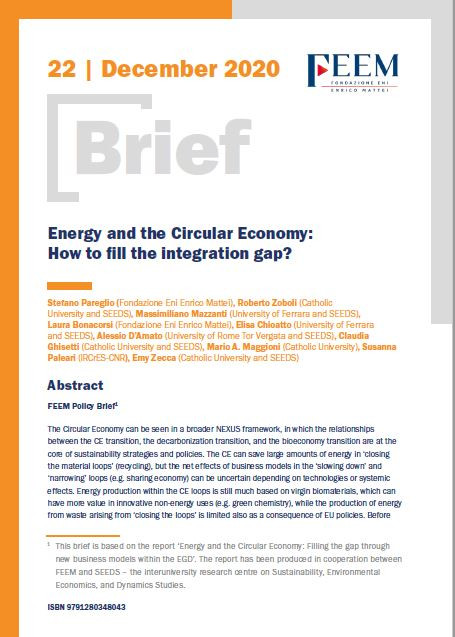Energy and the Circular Economy: How to fill the integration gap?

30.12.2020
The Circular Economy can be seen in a broader NEXUS framework, in which the relationships between the CE transition, the decarbonization transition, and the bioeconomy transition are at the core of sustainability strategies and policies. The CE can save large amounts of energy in ‘closing the material loops’ (recycling), but the net effects of business models in the ‘slowing down’ and ‘narrowing’ loops (e.g. sharing economy) can be uncertain depending on technologies or systemic effects. Energy production within the CE loops is still much based on virgin biomaterials, which can have more value in innovative non-energy uses (e.g. green chemistry), while the production of energy from waste arising from ‘closing the loops’ is limited also as a consequence of EU policies. Before the EGD, there was a weak integration between energy and the CE within the EU legislation. The EU-level definitions of CE criteria for funding business suffers for a ‘material circularity’ bias, which gives little attention to energy production from CE loops. However, CE and energy are increasingly connected within the EGD. The concepts of CE and ‘CE business models’ are increasingly holistic. Direct surveys indicate that this approach prevails in practice and firms adopt CE strategies that involve energy management and materials in an integrated way. The energy industry shows a mounting interest in the CE, both as an internal management approach and as a source of new market opportunities. Approaches and initiatives from major market players are heterogeneous and largely based on the appropriation of specific innovative businesses. The measurement of CE inside the companies is still challenging, and this issue must be addressed in front of the future adoption of ‘CE criteria’ by European policies and the financial system. The development of ‘integrated’ CEenergy business models can be needed to get the opportunities arising from the increasing CEenergy integration expected from the EGD.
